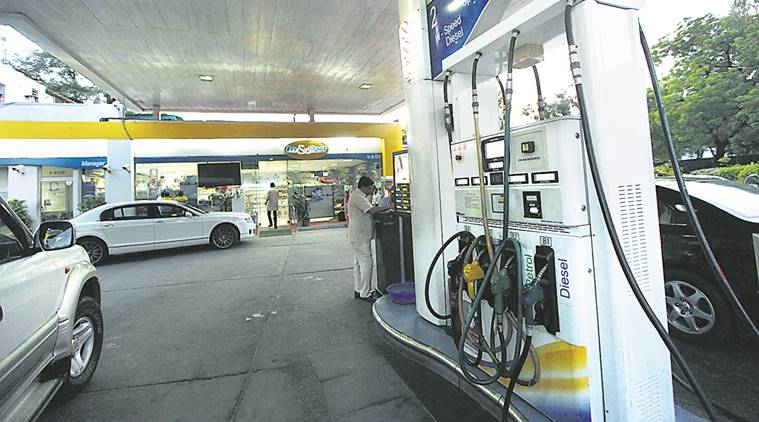The petroleum prices can go down by 2.60-2.90 rupees a liter if the government’s plan to 10 percent ethanol blending succeeds. According to Indian Sugar Manufacturers Association (ISMA), currently national average for ethanol blending is 4.02 percent. Central government has asked oil marketing companies (OMCs) to increase ethanol blending to 10 percent by 2022. “Blending ethanol with fuel raises the octane number of petrol. Petrol prices can be lowered if OMCs pass on the gains. The standardized octane number for petrol in India is 91. The cost of additives required to achieve this rating is built into the price of petrol. At present, splash blending of ethanol without changing the octane level at the refinery increases the octane rating by 2 excessive points, costing an additional 1.60 per litre of petrol,” said Amit Sachdev, South Asia Representative for the US Grains Council.
India produces excess sugarcane and therefore the prices of sugar crash every season. If this excess sugarcane could be diverted to produce ethanol, this will solve the fuel prices problem as well as help sugarcane farmers in getting better prices for production. In National Biofuel Policy, 2018 government has also put aside Rs. 5000 crore for establishing second generation refineries which could process agricultural into ethanol. According to the policy statement by the government, “ethanol production for blending with fuel in 2017-18 will be around 150 crore liters, resulting in foreign exchange savings of up to Rs 4,000 crore. Each liter of biofuel is expected to cut down carbon dioxide emissions by 20,000 tons.” Therefore, increase in ethanol production will save foreign exchange, reduce air pollution and help farmers. The country produces 176.3 crore litres ethanol per year while the actual demand is 313.5 crore litres per year as of now.
The government is expanding the base resource beyond sugar molasses, and according to the new policy, sugar-containing crops like beet, sorghum, corn and cassava, and damaged grains unfit for human consumption, such as rotten potato, wheat and broken rice would also be considered for ethanol production. The government has also put aside Rs. 5000 crore for establishing second generation refineries. Second generation refineries will also solve the problem of agricultural residues because they can be processed into biofuel. Furthermore, burning of agricultural residues in states like Haryana, Punjab causes smoke related problems in Delhi where people have to wear masks during the winters due to severe smog. The increased capacity in biofuel production will lead to a cleaner environment in the country, since we are facing dangerous levels of air pollution. India, the biggest emitter of greenhouse gases after the US and China, plans to reduce its carbon footprint by 33-35% from its 2005 levels by 2030, as part of its commitments to the United Nations Framework Convention on Climate Change adopted by 195 countries in Paris in 2015.
Sugarcane is a major crop in India with production touching 30 million tonnes by March 2018. The country is the largest producer of sugarcane after Brazil which produces more than double of India’s output due to its sheer landmass and better techniques. The plan to divert majority of excess agricultural produce will be a major benefit for the country, “India has saved forex worth rupees 4,000 crore in the last financial year due to savings from ethanol blending programme. The government aims to increase these savings to 12,000 crore per annum over the next four years,” said PM Modi in an event. He also outlined the plan to increase ethanol production in the upcoming years, “The country has set its course to produce nearly 450 crore litres of ethanol in the coming four years. Ethanol blending in petrol increased from 38 crore liters in the ethanol supply in the year 2013-2014, to an estimated 141 crore liters in the ethanol supply year 2017-2018. The Government had also approved the National Policy on Biofuel in June 2018.” The country imported crude oil worth 87.725 billion dollars or 5.65 lakh crore rupees in FY 18 with most of the supply coming from gulf countries like United Arab Emirates, Iran, Iraq, Qatar, and Saudi Arabia.
